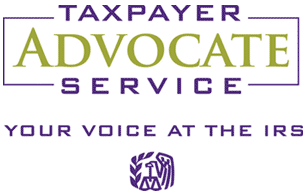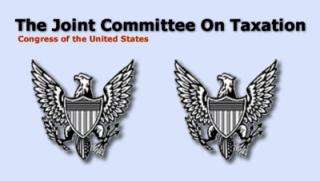However, at the beginning of the year it was reported that (OVDI/P) have led to 43,000 taxpayers paying back taxes, interest and penalties totaling $6 billion to date. The past 6 months only generating 2,000 additional disclosures and $500 million additional revenue may lead one to speculate that the OVDP, at least for high net wealth disclosures, is petering out. Regarding the 2012 IRS Streamlined OVD program, the Taxpayer Advocate found that as of September 2013, 2,990 taxpayers submitted returns reporting only an additional $3.8 million in taxes.
Substantial Money Laundering Penalties – But Not Tax Collection
The substantial majority of the $6.5 billion OVDI/P revenue is FBAR penalty, not tax collection and not tax penalty.
In the July 16, 2014 report, the Taxpayer Advocate found that the 2009 OVD program, the median offshore penalty paid by those with the smallest accounts ($87,145 or less) was nearly 6x the tax on their unreported income. Among unrepresented taxpayers with small accounts it was nearly 8x the unpaid tax. The penalty was also disproportionately greater than the amount paid by those with the largest accounts (more than $4.2 million) who paid a median of about 3x their unreported tax.
In her January 9, 2014 report, the Taxpayer Advocate previously found that for noncompliant taxpayers with small accounts, the FBAR and tax penalties reached nearly 600% of the actual tax due! The median offshore penalty was about 381% of the additional tax assessed for taxpayers with median-sized account balances.
When the IRS audited taxpayers who opted out (or were removed), on average, it assessed smaller, but still severe, penalties of nearly 70% of the unpaid tax and interest. Given the harsh treatment the IRS applied to benign actors, the Taxpayer Advocate reported that non-compliant taxpayers have made quiet disclosures by correcting old returns or by complying in future years without subjecting themselves to the lengthy and seemingly-unfair OVD process. Still others have not addressed FBAR compliance problems, and the IRS has not done enough to help them comply.
The IRS reported to the Taxpayer Advocate that its FY2014 FBAR Communication Strategy includes efforts to reach U.S. citizens residing abroad via Internet, social media, and collaboration with the State Department.
The IRS also responded as follows (excerpted):
Congress enacted both the Title 31 and the Title 26 provisions regarding the reporting requirements of the FBAR … and Form 8938 (Statement of Specified Foreign Financial Assets). Reporting on the FBAR is required for law enforcement purposes under the Bank Secrecy Act, as well as for purposes of tax administration. As a consequence, different policy considerations apply to Form 8938 and FBAR reporting. These are reflected in the different categories of persons required to file Form 8938 and the FBAR, the different filing thresholds for Form 8938 and FBAR reporting, and the different assets (and accompanying information) required to be reported on each form. Although certain information may be reported on both Form 8938 and the FBAR, the information required by the forms is not identical in all cases, and reflects the different rules, key definitions (for example, “financial account”), and reporting requirements applicable to Form 8938 and FBAR reporting.
These differing policy considerations were recognized by Congress during the passage of the HIRE Act and the enactment of Section 6038D. Congress’s intention to retain FBAR reporting requirements, notwithstanding the enactment of section 6038D, was specifically noted in the Technical Explanation of the Revenue Provisions Contained in Senate Amendment 3310, the “Hiring Incentives To Restore Employment Act,” …
The Technical Explanation states that “[n]othing in this provision [section 511 of the HIRE Act enacting new section 6038D] is intended as a substitute for compliance with the FBAR reporting requirements, which are unchanged by this provision.” (Technical Explanation at p. 60.) …
Have These Efforts Substantially Increased Taxpayer Compliance?
 The Taxpayer Advocate, replying on State Department statistics, cited that 7.6 million U.S. citizens reside abroad and many more U.S. residents have FBAR filing requirements, yet the IRS received only 807,040 FBAR submissions as recently as 2012 (see Report Volume 1, Page 229). The Taxpayer Advocate noted that in Mexico alone, more than one million U.S. citizens reside, and many Mexican citizens reside in the U.S. (and thus are required to file a FBAR for any Mexican accounts of $10,000 or greater). Thus, currently, less than 15% of taxpayers with FBAR filing requirements are probably compliant.
The Taxpayer Advocate, replying on State Department statistics, cited that 7.6 million U.S. citizens reside abroad and many more U.S. residents have FBAR filing requirements, yet the IRS received only 807,040 FBAR submissions as recently as 2012 (see Report Volume 1, Page 229). The Taxpayer Advocate noted that in Mexico alone, more than one million U.S. citizens reside, and many Mexican citizens reside in the U.S. (and thus are required to file a FBAR for any Mexican accounts of $10,000 or greater). Thus, currently, less than 15% of taxpayers with FBAR filing requirements are probably compliant.The Taxpayer Advocate noted that “more than one million U.S. citizens reside in Mexico and many Mexican citizens reside in the U.S.” The Report pointed out that most persons that worked in Mexico had to pay into a government mandated retirement account (known as an AFORES), and that this retirement account may be reportable to the IRS as a foreign trust.
How Much Tax Revenue Did Congress Expect
However, the reports citation for this $100 billion figure is only its footnote 1 that cites five magazine articles unsubstantiated information, that also varied widely in terms of opinions regarding the amount of tax losses the U.S. incurs. The 5 articles mentioned as the foundation for the $100 billion amount do not refer to any empirical study, do not provide any empirical evidence, and do not provide any statistical methodology.
IRS Commissioner Charles Shulman, in testifying before the Permanent Subcommittee on Investigations on March 4, 2009, was questioned on the analysis of hidden money criminally held overseas:
Senator McCaskell: “Has there been any analysis done of how much of this money that is being hidden overseas is, in fact, a result of criminal activity?”In the February 25, 2014 175-page bipartisan staff report the Senate Subcommittee increased the $100 billion to $150 billion. “Contributing to that annual tax gap are offshore tax schemes responsible for lost tax revenues totaling an estimated $150 billion each year.” To justify the reporting of this $150 billion a year of lost tax revenue due to “offshore tax schemes”, the Senate Report cites its previous investigatory reports supported by third party articles that refer to transfer pricing issues, not to studies about individual taxpayer offshore noncompliance.
Mr. Shulman: “Not that I am aware of. I mean, estimating how much money that is overseas and not being paid to the government. As far as I am aware, there is no credible estimate because it is kind of a chicken and egg. It is over there and we have not found it, it is hard to estimate what is there. And all estimates that I have seen have not broken down criminal versus civil because, again, until we see the cases, it is hard to say.”
Relative to the reported figure of $150 billion, the additional OVDI/P tax collection of approximately $500 million a year is just .003% (a third of one percent) of the goal. The FBAR money laundering penalties prop up the overall collection amount, but it’s a drop in the bucket of the Senate estimate.
How Much Did the Congressional Joint Committee on Tax Estimate FATCA Will Bring in Annually?
 The Congressional Joint Committee on Tax estimated that FATCA will only generate $8.7 billion over ten years or average revenue $870 million per year. The $870 million annually appears not too far out of line with the tax collections generated by the OVDI/P the past six years, albeit the compliance costs to global industry to prepare for FATCA is currently estimated near this same amount based on government reports from the UK, Canada, Spain, among other trade partners of the US.
The Congressional Joint Committee on Tax estimated that FATCA will only generate $8.7 billion over ten years or average revenue $870 million per year. The $870 million annually appears not too far out of line with the tax collections generated by the OVDI/P the past six years, albeit the compliance costs to global industry to prepare for FATCA is currently estimated near this same amount based on government reports from the UK, Canada, Spain, among other trade partners of the US.The Florida Bankers Association reported to Fitch that $60 billion and $100 billion in foreign deposits are held in Florida banks, close to 20% of the state’s total deposits. In 2012, Fitch estimated that a substantial portion of these deposits would NOT expatriate from Florida. But according to the Texas Bankers Association, FATCA has resulted in an outflow of $500 million of deposits from the Texas banking system already.
Based on a rate of the 15% long terms capital gain that applies to that money over the past 7 look-back years of Statute of Limitation, the currently cited $150B of lost annual tax revenue would require $1 trillion of annual taxable (hidden) income. To generate $1 trillion of capital gains income at a 5% rate of return requires $20 trillion of “noncompliant” offshore dollars. Is it likely that noncompliant money represents almost double the M2 money supply (Federal Reserve data of March 6, 2014 about $11T, see http://www.federalreserve.gov/releases/h6/current/) and about 20 times the actual amount of paper dollars that are in circulation?
http://lawprofessors.typepad.com/intfinlaw/2014/07/is-a-2220-fbar-penalty-for-17-dollar-tax-understatement-good-compliance-policy.html

No comments:
Post a Comment
Note: Only a member of this blog may post a comment.